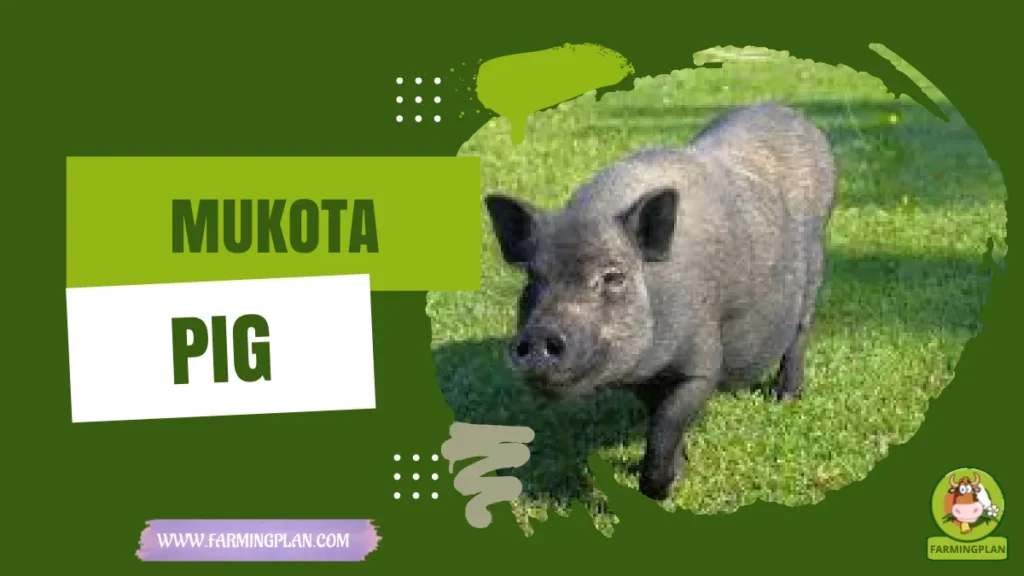If you need a hardy goat that thrives in the mountains and gives both milk and meat, the Thuringian Goat is a top pick. This medium-sized German breed is tough, calm, and perfectly suited for cooler climates. With a deep chest, light face mask, and white leg markings, they’re as striking as they are practical. I’ve raised these goats myself and can tell you—they’re reliable, easy to care for, and great for both beginners and seasoned farmers. In this guide, I’ll cover everything from their history to feeding, health tips, and daily care. Let’s explore why the Thuringian Goat deserves a place in your pasture.
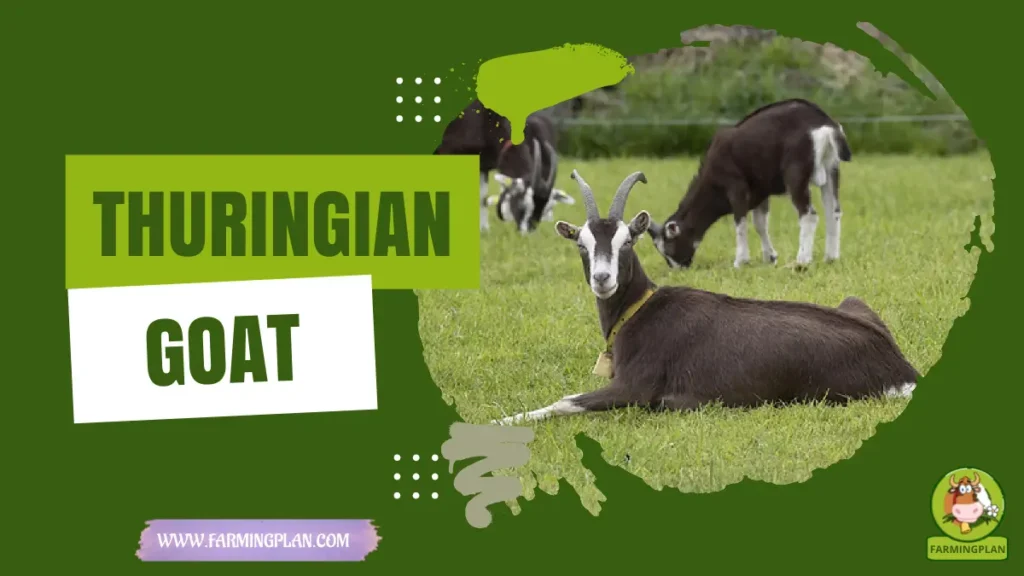
History & Origin of The Thuringian Goat
The Thuringian Goat, also known as the Thuringian Forest Goat, hails from the hilly and forest-rich Thuringian region of Germany. These goats developed naturally over centuries, adapting to the rugged terrain and cooler climates of places like the Erzgebirge mountains. They’re not a modern invention but rather a present-day domestic animal deeply connected to regional German goat breeds.
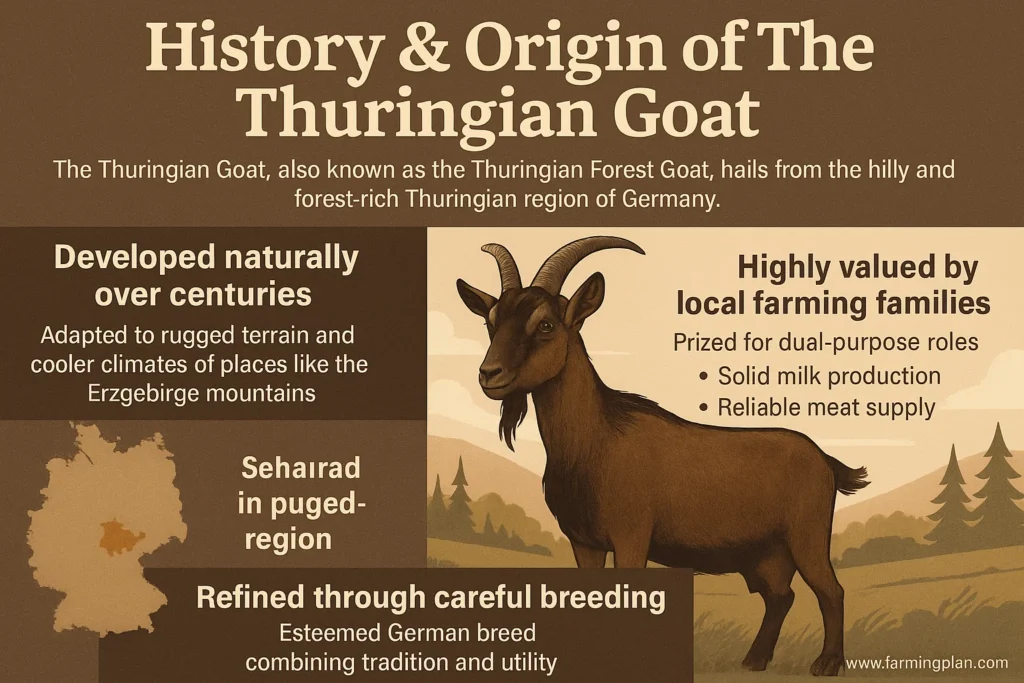
Historically, these goats were highly valued by local farming families. They needed animals that could survive on sparse vegetation and rough terrain—and the Thuringian Goat delivered. For generations, they’ve been prized for their dual-purpose roles: solid milk production and reliable meat supply. Over time, careful breeding, especially through intensive goat breeding programs, has refined their traits while keeping their hardy genetics intact. Today, they’re considered one of Germany’s esteemed breeds, respected both for tradition and utility.
Read More: Oberhasli Goat: Stunning Dairy Star With a Calm Soul
Characteristics of The Thuringian Goat
Now, let’s talk about what you’ll notice first: the Thuringian Goat’s distinctive look. They’re medium-sized goats, with an average wither height of about 70–80 cm for females and slightly more for males. These goats have a deep chest, strong legs, and a light to dark brown coat, sometimes with black markings. You might spot a light face mask, white flash on the legs, or a few other white markings that give them a unique look. They’re also often hornless, which is great if you’re looking for goats that are easier to manage.
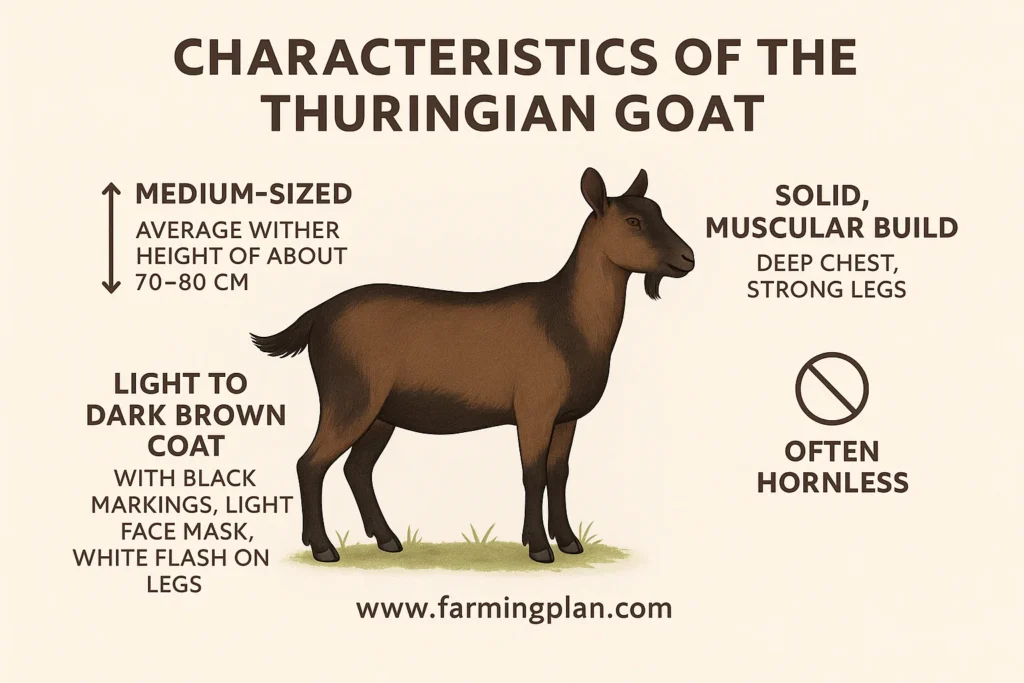
One thing I appreciate is how these goats seem perfectly built for their native mountainous terrain. They’ve got a solid, muscular build—not bulky, but lean and strong. They’re known to be black or brown animals, which also helps them blend into the woodland terrain. All in all, they’re a balanced, attractive goat breed that reflects both beauty and utility.
Read More: Saanen Goat: Friendly, Productive, and Easy to Raise
Nature & Temperament of The Thuringian Goat
One of the biggest questions I get from first-time goat owners is: “Are they easy to handle?” The answer is yes—with the Thuringian Goat, you’re getting a calm and collected animal. They’re generally docile, but not dull. In fact, I’d say they’re alert, curious, and enjoy interaction. They don’t mind human contact, making them suitable for small farms or homesteads with kids around.
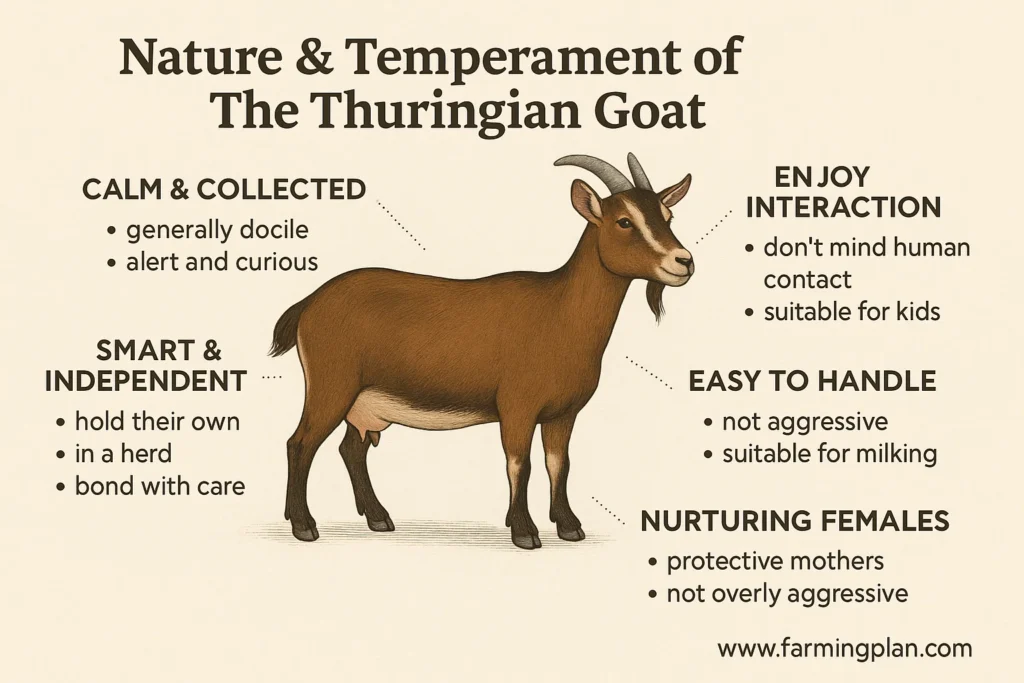
Despite being calm, they’re no pushovers. They’re smart and independent enough to hold their own in a herd. If you raise them with care, they’ll bond with you over time. That’s one reason why I often recommend them to beginner breeders. They’re not aggressive, and with some training, they’re easy to handle for milking or health checks. Their personality really shines during goat pregnancies and kidding—females are usually nurturing and protective without being overly aggressive. Whether you’re raising goats for fun, food, or milk, you’ll find Thuringian Goats to be cooperative partners.
Read More: Toggenburg Goat: The Swiss Goat Breed
Food & Diet
When it comes to feeding, the Thuringian Goat is surprisingly low-maintenance. That’s a big plus for anyone starting out. These goats are built to graze on rough mountain vegetation, which means they do well on a diet of grasses, shrubs, and hay. But if you want optimal meat and milk production, you’ll need to supplement with commercial goat feed.
Here’s what I feed mine:
- Good-quality hay (like alfalfa or timothy)
- Commercial dairy goat pellets for milking does
- Seasonal fruits or vegetables in moderation (carrots, apples)
- Mineral blocks for essential nutrients
Avoid feeding them toxic plants (oleander, azaleas), and don’t overdo the grains. Too much can cause bloat or other digestive issues. Also, always keep fresh water and shelter available—hydration is key, especially for female goats in milk.
Usage & Purpose
The Thuringian Goat serves multiple roles on a farm. Primarily, they are known as a dairy breed native to Germany, capable of producing rich milk perfect for goat cheese and goat milk lovers. Their milk isn’t just tasty—it’s nutritious and often easier to digest than cow’s milk.
But they’re not just milk machines. This breed also contributes to meat production, offering a solid taste of lamb meat with fine texture. Their lean bodies produce enough meat to support small-scale butchering needs, especially in areas where poultry meat or other sources are limited. They’re also used in regional shows, breeding programs, and conservation projects. Because they’re a heritage breed, some breeders focus on preserving their genetics through intensive goat breeding efforts.
Special Features
What sets Thuringian Goats apart? First, their adaptability. These goats were bred in hilly, cold places and can thrive in various mountainous regions. They’re tough animals—resistant to harsh weather and some local diseases.
Another standout trait is their appearance. The blend of brown and black coloring, with that signature light face mask and occasional white flash, gives them a distinguished look. These markings not only make them recognizable but also visually appealing for thuringian goat stock photos and goat stock video clips. And let’s not forget: they’re hornless animals by default, which is rare and makes handling much easier—especially for beginners or smaller setups.
Smart, Strong, And Mountain-Bred—The Thuringian Goat Is Like The Alpine SUV Of Dairy Goats!
Health Issues & Prevention
Thuringian Goats are relatively healthy, but like all animals, they can face some challenges. The most common issues include:
- Worm infestations
- Foot rot in wet environments
- Mastitis in milking does
- Respiratory issues during cold snaps
I recommend regular deworming schedules and keeping your barn clean and dry. Trim hooves monthly to prevent rot and infection. For milking goats, clean udders before and after each session. Use natural supplements like garlic or diatomaceous earth as preventive measures. And always keep a vet on speed dial—especially during goat pregnancies, which can sometimes lead to complications. Prevention is key, and with Thuringians, a little care goes a long way.
Step-By-Step Thuringian Goat Farming Guide
Step 1: Build A Safe And Warm Shelter
Start with a well-ventilated, dry goat shed. Use straw bedding, make sure there’s good drainage, and keep it free of drafts. Thuringian Goats hate dampness—it invites foot rot. Make sure fencing is sturdy; they’re curious and might test it!
Step 2: Choose Healthy Stock From Reputable Breeders
Look for breeders that specialize in German goat breeds. Examine the goats—clear eyes, smooth coat, active behavior. Ask about vaccination history and previous goat pregnancies if buying female goats. This builds the foundation of your future herd.
Step 3: Provide A Balanced Diet Daily
Stick to a schedule. Give hay in the morning, followed by grain in the evening. Offer clean water and a salt or mineral block 24/7. For milking goats, add a scoop of commercial goat feed during milking for energy and output.
Step 4: Monitor Health Weekly
Check their weight, look for bloating, inspect hooves, and do worm counts if needed. Keep a log. If anything seems off, call your vet. A little attention each week prevents big problems down the line.
Step 5: Prepare For Breeding And Kidding
Understand your goat’s cycle and time for mating. Most does go into heat in fall. Use a healthy buck or opt for AI. Have a kidding kit ready when due—clean towels, iodine, and gloves. Watch for signs like restlessness or nesting behavior.
Expert Tips & Best Practices For Raising Thuringians
- Always rotate pasture to prevent overgrazing and parasites.
- Don’t overcrowd. Give each goat at least 20 square feet of shelter space.
- Introduce new goats slowly to avoid stress or fighting.
- Use high-quality images and videos for marketing if you’re selling.
- Get involved with online forums or local goat groups—community makes you smarter.
- Train young goats early—they’ll be easier to milk, lead, and handle later on.
- Keep records of births, feed, and vaccinations. Organization pays off!
FAQ
Are Thuringian Goats good for beginners?
Yes, they are calm, hardy, and easy to manage, making them ideal for first-time goat keepers.
How much milk does a Thuringian Goat produce?
They produce moderate amounts—enough for household use and small-scale cheese making.
Can Thuringian Goats live with other breeds?
Absolutely! They get along well with other goats, including Toggenburg goats and Verata goats.
Where can I find Thuringian Goats for sale?
Check with regional goat breeders, online livestock marketplaces, or German conservation groups.
What’s the link between Thuringian goats and German football?
It’s more cultural than literal—some regional fans and clubs in Germany proudly associate with local animals like the Thuringian Goat.
Conclusion
The Thuringian Goat is more than just another farm animal—it’s a breed with heart, history, and real value. Whether you’re raising them for their nutrient-rich goat milk, adding quality meat supply to your table, or preserving a piece of regional German heritage, they offer a balance of personality, productivity, and toughness. From their unique looks to their smart temperament, they’re truly built for both beginners and experienced farmers. Ready to add one to your herd? Dive in—your farm will thank you.

